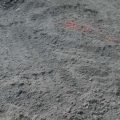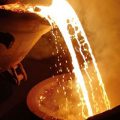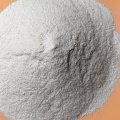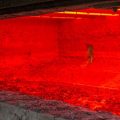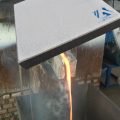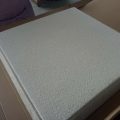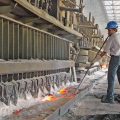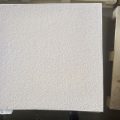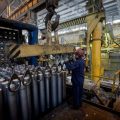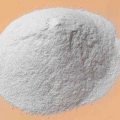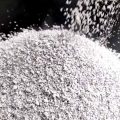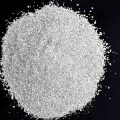Molten Aluminum Flux can remove metal impurities, oxides and other oxide inclusions in aluminum and aluminum alloy melts from the melt through physical, chemical or physical-chemical interactions.
Molten Aluminum Flux is determined by the adsorption and dissolution of oxide inclusions in the melt and the chemical interaction between the refining agent and the impurities in the melt.
The smaller the interfacial tension between the refining agent and the inclusions, the better the adsorption of the refining agent and the stronger the removal of impurities.
In the process of refining and transportation of molten metal, foreign substances such as oxide scale, intermetallic compounds, and furnace fragments are easily brought into the molten metal to form non-metallic inclusions. These non-metallic inclusions are mainly oxide inclusions.
According to the different formation period in the melting and casting process, it can be divided into primary oxide inclusions and secondary oxide inclusions.
Primary oxide inclusions mainly refer to all oxide inclusions formed before molten aluminum is poured.
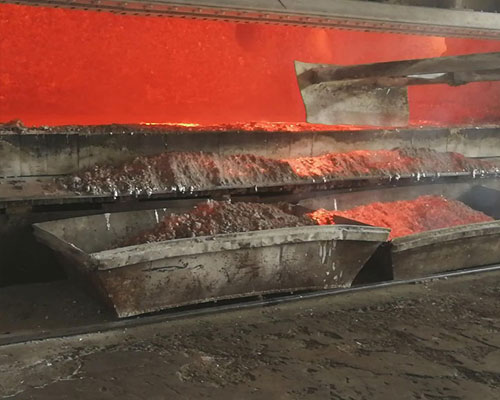
The secondary oxide inclusions can be divided into two types according to their shapes
One type is the uneven distribution of large inclusions in the macrostructure. This type of inclusion makes the alloy structure discontinuous and reduces the air tightness of the workpiece, becoming the source of corrosion, significantly reducing the strength and plasticity of the aluminum alloy, and often becoming a part. The source of cracks.
The second type of oxide inclusions refers to small, dispersed inclusions, which cannot be completely removed even after careful purification. It increases the viscosity of the molten metal, reduces the feeding ability of the molten aluminum during solidification, and easily causes shrinkage porosity of the casting.
Secondary oxide inclusions, also called endogenous inclusions, are mainly formed during the casting process.
The endogenous inclusions are generally distributed more uniformly and the particles are smaller.
The splash and turbulence of molten aluminum during the pouring process are the main sources of secondary oxide inclusions.
In the sand mold, the molten aluminum reacts with the water in the molding sand, and the water is decomposed into oxygen and hydrogen. Oxygen reacts with aluminum to form oxide inclusions, and hydrogen dissolves in the molten aluminum.
When developing secondary aluminum, we must face three technical challenges: pretreatment of scrap aluminum raw materials, precise composition control and melt purification. Among them, the pretreatment of scrap aluminum raw materials is particularly important as the first step in the production of recycled aluminum, and its quality directly determines whether the subsequent processes can proceed smoothly.
Due to the complexity of raw materials, secondary processing of aluminum alloy is required. A typical pretreatment process should achieve the following goals
1. Remove other metals and pollutants in scrap aluminum.
2. The oil stains, oxides and paint on the surface of the scrap aluminum must be removed.
3. According to the composition of aluminum scrap, the classification is based on making them close to a certain grade of aluminum alloy in composition.
Pre-treatment techniques include impurity separation, sorting, packaging, cleaning and drying. The end result is that the aluminum scrap is processed into a charge that matches the furnace charging conditions. The most important process in the subsequent aluminum scrap recycling process is the separation of impurities and the fractionation of aluminum scrap.
Scrap aluminum is divided into two categories: new waste and old waste. New aluminum scrap mainly refers to aluminum scrap obtained in the production process of aluminum and its alloys. Old aluminum scrap mainly refers to aluminum and aluminum alloy parts or all products that are scrapped. The first has a clear composition and high consumer value. Generally, alloys are classified and stored according to grades, and the original alloy is melted by the manufacturer. The latter is what we usually call aluminum scrap, which needs to be sorted and sorted.
Purification of recycled aluminum
At present, aluminum is the most widely used non-ferrous metal in the world, and aluminum products are widely used in various fields of the national economy. Compared with the production of electrolytic aluminum, the use of recycled aluminum can save 95% of energy such as water and electricity.
Less waste gas and waste are generated during the production process, and environmental pollution is significantly reduced.
At the same time, the use of recycled aluminum can also reduce the production cost of aluminum alloy products, which has good social and economic benefits.
Please Contact sales@adtechamm.com for Molten Aluminum Flux
By formulating a reasonable smelting process, an aluminum alloy melt with high purity and chemical composition

